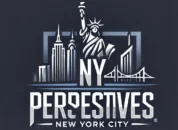
Hanging on and walking around Delancey Street in the 1940s
New York City in the 1940s was a bustling metropolis undergoing significant transformation. The decade was shaped by World War II, which brought economic prosperity and made New York City a global financial and manufacturing powerhouse. Over 900,000 New Yorkers served in the war, and the city played a pivotal role in supplying troops and materials.
Times Square and Broadway experienced dimouts to protect against potential air raids. The city’s economy boomed, with 40,000 factories and over a million factory workers. By the late 1940s, New York City had become the world’s largest manufacturing center and financial hub.
Daily life was vibrant, with street peddlers selling goods, cars stalled under mounds of snow, and iconic moments, such as New Yorkers celebrating the end of World War II in Times Square. The architectural landscape evolved, and neighborhoods reflected the city’s diverse cultural influences.
